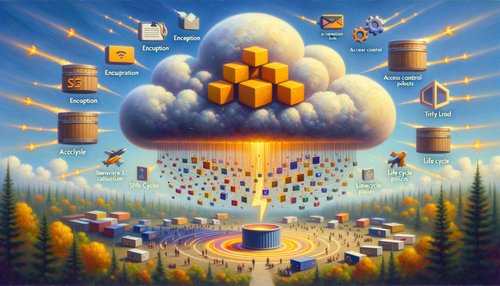Unlock the Power of Serverless Computing with Docker Images!
Serverless computing is an increasingly popular way to build and deploy applications. With serverless computing, developers can focus on writing code, instead of managing infrastructure. Docker images are a great way to get started with serverless computing. In this blog post, we'll explore how Docker images can help you unlock the power of serverless computing.
What is Serverless Computing?
Serverless computing is a cloud computing model that allows developers to build and deploy applications without managing infrastructure. Instead of managing a server, developers can write code and deploy it to a cloud platform, such as AWS Lambda, Google Cloud Functions, or Azure Functions. This type of computing is becoming increasingly popular, as it allows developers to focus on writing code, instead of managing infrastructure.
What are Docker Images?
Docker images are pre-built, ready-to-use applications that can be deployed to a cloud platform. Docker images are created from a Dockerfile, which is a text file that contains instructions for building a Docker image. Docker images can contain everything needed to run an application, such as code, libraries, and configuration files. Docker images can be used to quickly deploy applications to a cloud platform, without having to manually configure the infrastructure.
How Can Docker Images Help with Serverless Computing?
Docker images can help developers quickly deploy applications to a cloud platform. Docker images contain all the necessary components, such as code, libraries, and configuration files, so they can be deployed without any additional setup. This makes it easy to deploy applications to a cloud platform, without having to manually configure the infrastructure.
Docker images can also be used to create custom runtimes for serverless applications. By creating a custom runtime, developers can extend the capabilities of their serverless applications. For example, a custom runtime can be used to add custom libraries or frameworks to a serverless application, or to integrate with third-party services.
Conclusion
Docker images are a great way to get started with serverless computing. Docker images can be used to quickly deploy applications to a cloud platform, without having to manually configure the infrastructure. They can also be used to create custom runtimes for serverless applications, which can extend the capabilities of the application.
By leveraging the power of Docker images, developers can unlock the full potential of serverless computing. With serverless computing and Docker images, developers can focus on writing code, instead of managing infrastructure.
Recent Posts

Unlocking the Power of Terraform: Mastering Conditional Expressions for Smarter Infrastructure Automation

Unveiling the Future: Navigating the Public Interface of Apache Airflow for Streamlined Workflow Management
Apache Airflow
Mastering Workflow Automation: Unconventional Apache Airflow How-To Guides for the Modern Data Enthusiast
Apache Airflow
Mastering the Cloud: Unveiling AWS CloudFormation Best Practices for Seamless Infrastructure Management



